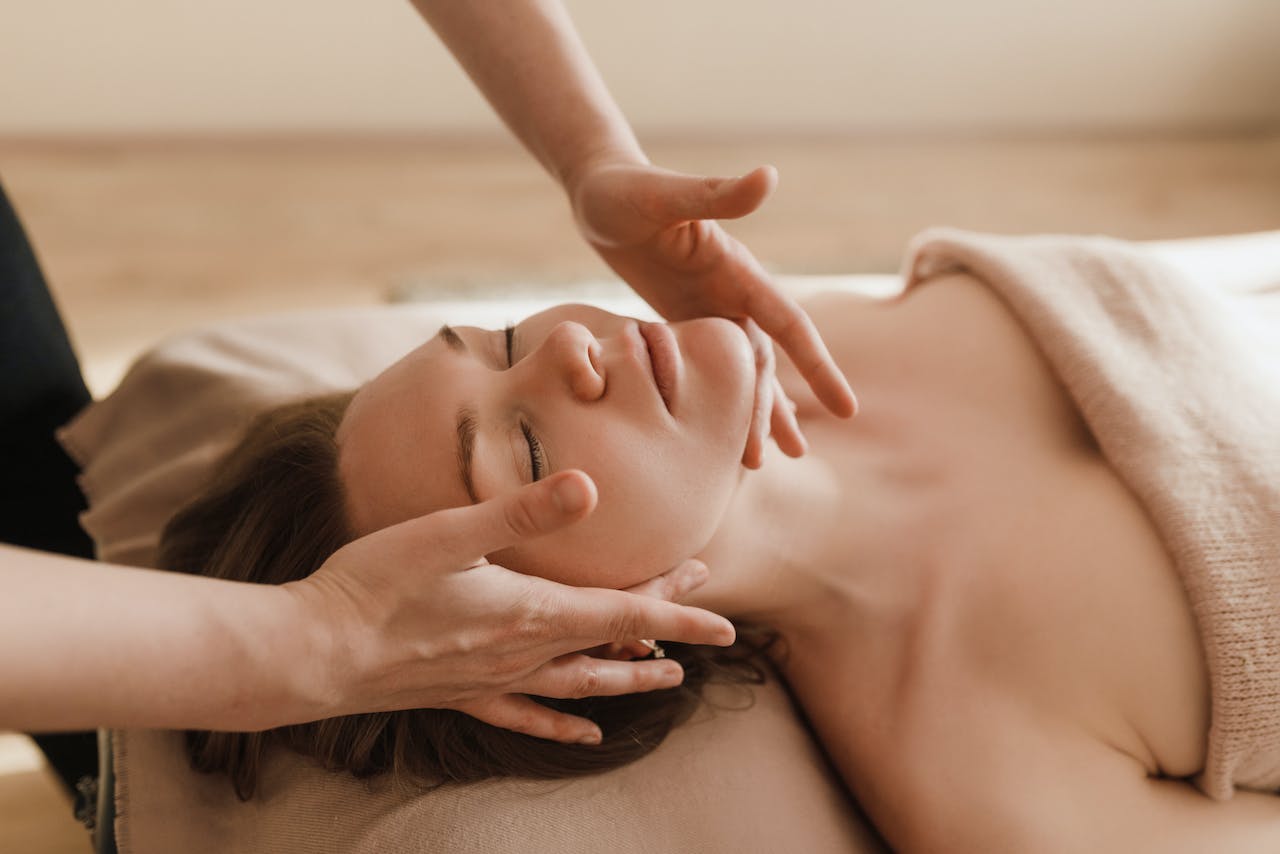Delve into the fascinating realm of Structural Integration and unravel its profound impact on TMJ disorders. Discover how this specialized form of bodywork can offer relief where traditional methods fall short. By understanding the science behind Structural Integration, you can grasp how it targets the root causes of TMJ issues, providing lasting benefits that go beyond mere symptom management. Explore the intricate connection between structural alignment and jaw function, unlocking a holistic approach to addressing discomfort and restoring harmony to your body. Embrace a new perspective on healing as we delve into the transformative effects of Structural Integration on TMJ disorders.
Understanding TMJ Disorders
Temporomandibular Joint (TMJ) refers to the joint connecting your jawbone to the skull, allowing you to open and close your mouth. On the other hand, Temporomandibular Disorder (TMD) involves issues affecting the muscles and joints responsible for jaw movement.
Dysfunction in the TMJ can result from various factors such as teeth grinding, jaw clenching, or arthritis. This dysfunction often leads to symptoms like jaw pain, clicking sounds when moving the jaw, and difficulty chewing.
Inflammation in the TMJ can significantly impact jaw movement. It can lead to swelling, stiffness, and limited range of motion in the jaw joint. This inflammation can cause discomfort and affect daily activities like eating and speaking.
Causes Behind TMJ and TMD
Misalignment of the jaw joint, often caused by shoulder pain, can lead to TMJ disorders. This misalignment affects the functionality of the jaw, resulting in discomfort and restricted movement.
Muscle tension due to chronic stress is another significant factor contributing to TMJ pain. The tightness in the muscles surrounding the jaw joint can exacerbate TMJ disorders, leading to increased pain and discomfort.
Relationship Between Muscle Tension and Pain
The relationship between muscle tension and TMJ pain is intricate. When muscles are constantly tense due to stress or poor posture, they can put excessive pressure on the jaw joint, causing inflammation and discomfort.
Pro: Identifying and addressing the root causes of misalignment and muscle tension can help alleviate TMJ pain.
Con: Ignoring these factors may worsen TMJ disorders over time, leading to more severe symptoms.
Overview of Structural Integration Science
Structural Integration involves analysis and manipulation of the body’s connective tissues to enhance posture and movement. Practitioners aim to optimize fascia, the network of tissue surrounding muscles and organs.
Structural Integration sessions are structured to address imbalances in the body caused by poor habits, injuries, or stress. By applying specific pressure and movements, practitioners aim to realign the body for improved function and reduced pain.
In Structural Integration, the focus lies on aligning the body’s structure to improve overall well-being. Through targeted techniques, such as deep tissue manipulation and movement education, Rolfers work towards restoring balance and flexibility in the body.
Benefits of Structural Integration include enhanced posture, increased range of motion, and decreased tension. Clients often report feeling lighter and more at ease in their bodies after a session.
In addressing TMJ disorders, Structural Integration pays special attention to the fascial elements surrounding the jaw joint. By releasing tension in these tissues through manual manipulation, practitioners can help alleviate pain and discomfort associated with TMJ issues.
Clients experiencing TMJ symptoms like jaw pain, clicking, or limited mobility may find relief through targeted Structural Integration sessions. The holistic approach of Structural Integration considers not just the symptoms but also the underlying structural imbalances contributing to TMJ problems.
Structural Integration’s Approach to TMJ Relief
Structural Integration, a form of manual therapy, focuses on realigning the body to address TMJ disorders. By targeting the jaw and surrounding areas, Structural Integration aims to alleviate pain and improve joint function. Through precise manipulation, therapists work on releasing tension in the head, neck, and even the back.
During a Structural Integration session for TMJ relief, therapists use their fingers to apply gentle pressure on specific points. This technique helps release tightness in the jaw muscles and encourages proper alignment of the jaw joint. By addressing compensatory patterns caused by TMJ disorders, Structural Integration promotes long-term healing and improved functionality.
One key aspect of Structural Integration’s approach to TMJ pain relief is its focus on overall body alignment. Therapists don’t just target the symptoms; they look at how different parts of the body interact and influence each other. By addressing issues like posture and muscle imbalances, Structural Integration sessions aim to provide lasting relief from TMJ discomfort.
Each Structural Integration session is personalized to suit the individual’s needs. Therapists assess not just the physical symptoms but also consider factors like lifestyle habits and past injuries. This personalized approach ensures that every session targets the root cause of the TMJ disorder, leading to more effective results over time.
Unlike quick fixes that only address surface-level symptoms, Structural Integration sessions prioritize long-term healing for TMJ disorders. By working on improving overall body alignment and addressing underlying issues, Structural Integration aims to provide lasting relief from TMJ pain. Clients often report not just reduced pain but also improved jaw function and overall well-being.
What Happens in a Structural Integration Session
Muscle Targeting
During a Structural Integration session, the practitioner focuses on targeting specific muscles through deep tissue manipulation. This process aims to release tension and improve overall body alignment.
By applying pressure to different muscle groups, Structural Integration can help alleviate tightness and restore optimal muscle function. The external muscles are addressed first before moving on to the internal muscles for a comprehensive treatment approach.
Alignment Techniques
Through a series of sessions, Structural Integration addresses not only the muscles directly related to TMJ disorders but also those that can indirectly impact jaw alignment. Practitioners work on neck and chest muscles to promote better posture and overall body alignment.
The goal is to create a more balanced muscular structure throughout the body, which can have a positive impact on issues such as TMJ disorders. By targeting these key areas, Structural Integration aims to address underlying causes of discomfort and pain.
Key Focus Areas During Structural Integration for TMJ
Structural Integration focuses on myofascial chains and soft tissue to address issues related to TMJ disorders. Specific areas targeted include the hip flexion, thoracolumbar fascia, and cervical spine. By working on these regions, Structural Integration aims to improve overall posture and alleviate tension in the jaw.
During Structural Integration sessions, correcting the alignment of the jaw is crucial. Misalignments in the jaw can lead to muscle tone imbalances and contribute to TMJ disorders. By realigning the jaw through manipulations and adjustments, Structural Integration helps restore proper function and reduce discomfort associated with TMJ issues.
Structural Integration also pays attention to the position of the head in relation to the body. Improper head positioning, such as excessive external rotation, can put strain on the muscles supporting the jaw, leading to increased tension and discomfort. Through specific techniques, Structural Integration aims to correct head alignment to release tension in the jaw area.
Potential Benefits of Structural Integration for TMJ
Structural Integration, a form of bodywork focusing on alignment and balance, can enhance jaw functionality for individuals suffering from TMJ disorders. Through targeted manipulation and tissue release techniques, Structural Integration aims to realign the body’s structure, including the jaw, leading to improved movement and reduced discomfort. This process helps alleviate tension in the jaw muscles, promoting better range of motion and easing the strain associated with TMJ disorders.
One of the significant benefits of Structural Integration for TMJ disorders is its potential for long-term pain relief. By addressing underlying structural imbalances and misalignments that contribute to TMJ issues, Structural Integration sessions can provide lasting relief from chronic pain and discomfort. Over time, as the body adjusts to its newly aligned state through Structural Integration interventions, individuals may experience reduced jaw pain, increased comfort during daily activities, and improved overall quality of life.
Structural Integration not only targets physical symptoms but also promotes enhanced body awareness in individuals dealing with TMJ disorders. By encouraging clients to become more attuned to their body’s movements, sensations, and alignment patterns, Structural Integration fosters a deeper connection between mind and body. This heightened awareness can help individuals recognize harmful habits or postures that exacerbate TMJ symptoms, empowering them to make conscious adjustments for long-term relief and prevention.
Another valuable benefit of Structural Integration for TMJ is its ability to induce increased relaxation and stress reduction in clients. The gentle yet precise manipulations performed during Structural Integration sessions can release tension held in the jaw muscles due to stress or anxiety. As a result, individuals may experience not only physical relaxation in the jaw area but also an overall sense of calmness and well-being. This holistic approach addresses both the physical manifestations of TMJ disorders and their potential emotional triggers.
Through its focus on structural integration, Structural Integration can help individuals with TMJ disorders achieve improved posture and overall body alignment. By addressing imbalances throughout the body that may contribute to jaw tension and dysfunction, Structural Integration sessions aim to create a more harmonious relationship between different parts of the body. This comprehensive approach not only benefits jaw functionality but also supports better overall posture, reducing strain on the neck, shoulders, and back.
Conclusion
In understanding TMJ disorders, you’ve delved into the causes, the science behind Structural Integration, and its specific approach to providing relief. Through targeted sessions focusing on key areas, Structural Integration offers potential benefits that real-life success stories attest to. If you seek a holistic way to address TMJ issues, Structural Integration could be the solution you’ve been looking for. Take the next step towards relieving your TMJ discomfort by exploring Structural Integration further and considering it as part of your wellness journey.
Transforming TMJ Disorder Management with Structural Integration: Achieve Jaw Harmony with MedicinEvolution’s Groundbreaking Approach!
Are you or someone you know struggling with the challenges of TMJ (temporomandibular joint) disorder, searching for relief from jaw pain, or aiming to enhance jaw function and alignment? MedicinEvolution is at the cutting edge of incorporating Structural Integration into TMJ disorder management and structural integration, offering individuals a pathway to optimal oral health and functional harmony. Through the powerful techniques of Structural Integration, MedicinEvolution directly targets the root causes of TMJ disorder, sparking a comprehensive healing journey. Say goodbye to the discomforts of TMJ disorder, including chronic jaw pain, difficulty chewing, and the uneven strain on your facial muscles—as MedicinEvolution tailors its approach to address your body’s unique needs, leading you towards significant relief and functional improvement. Their customized Structural Integration sessions are designed to navigate you through the limitations TMJ disorder imposes, unveiling your body’s full potential for movement and ease.
If TMJ disorder has been a source of constant pain, discomfort, or has restricted your jaw movement and overall quality of life, MedicinEvolution’s innovative method, blending Structural Integration with specialized techniques for TMJ care, is exactly what you’ve been looking for. Don’t let TMJ disorder dictate the boundaries of your oral well-being—take action and schedule your consultation with MedicinEvolution today! Embark on a healing journey with their Structural Integration-focused treatments and start progressing towards a more harmonious, pain-free, and functionally aligned jaw. Your body, now freed from the constraints of TMJ disorder, will embrace the remarkable transformation!





